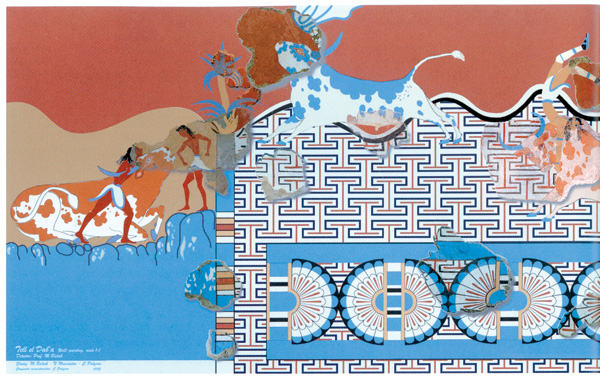Beyond Crete
Minoan Wall Paintings
Sidebar to: Excavating Minoan Sites

After concluding his spectacular excavations at Ur in 1935, the British archaeologist Leonard Woolley moved north. Having sought (and, he believed, found) the home of the first biblical Israelites—the Ur of the patriarch Abraham—Woolley set his sights on Europe’s oldest civilization. He was sure that the origins of Minoan culture were to be found in the Near East.
Woolley excavated a number of sites in present-day southern Turkey—along the ancient trade route (later known as the Parthian Road) that ran up the Euphrates River and overland to the Mediterranean. In 1947 he finally struck gold at Tell Atchana (Thirsty Mound), which was soon identified as the second-millennium B.C. site of Alalakh.


Here Woolley excavated two major palaces, each with its own archive of Old Babylonian cuneiform tablets. In one of the palaces, the palace of Yarim-Lim, Woolley found fragments of wall painting executed in true fresco technique, with the paint applied to the wet plaster. All Near Eastern wall painting, Woolley knew, was on dry plaster, a technique known as tempera or secco. Only on Minoan Crete were palace walls decorated with wall paintings done in true fresco style.
Already a library member? Log in here.
Institution user? Log in with your IP address.

